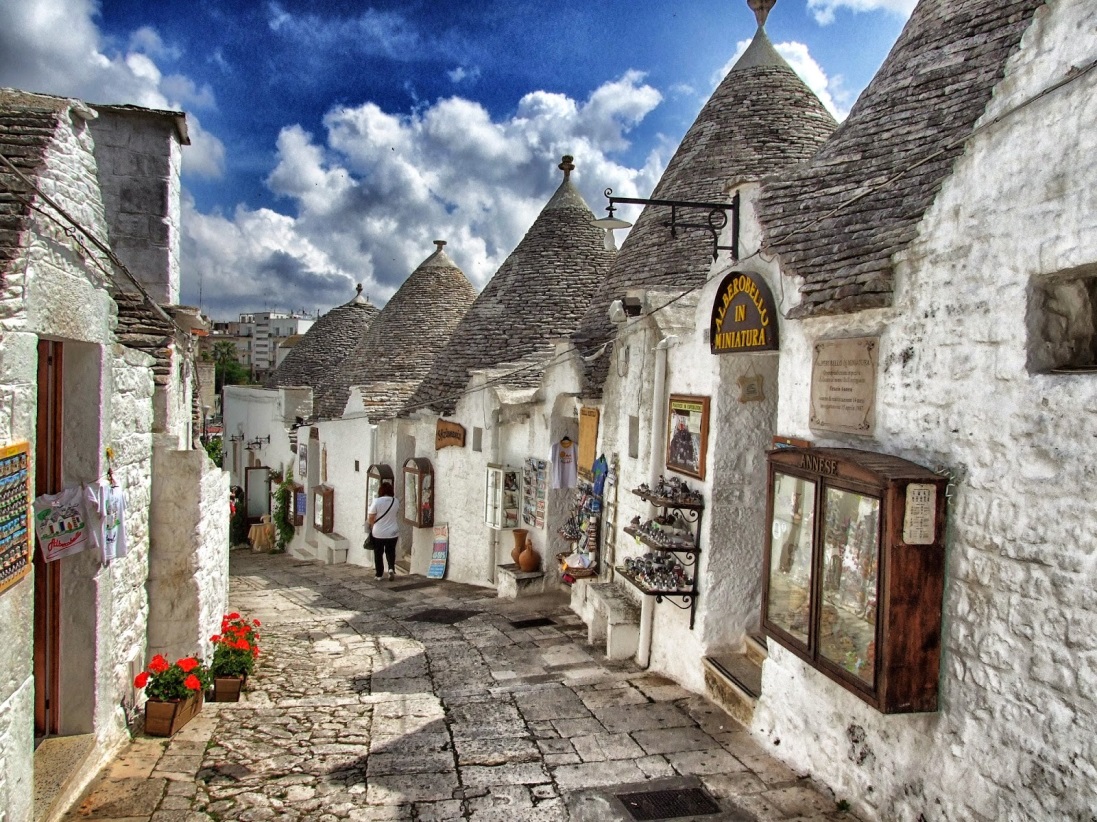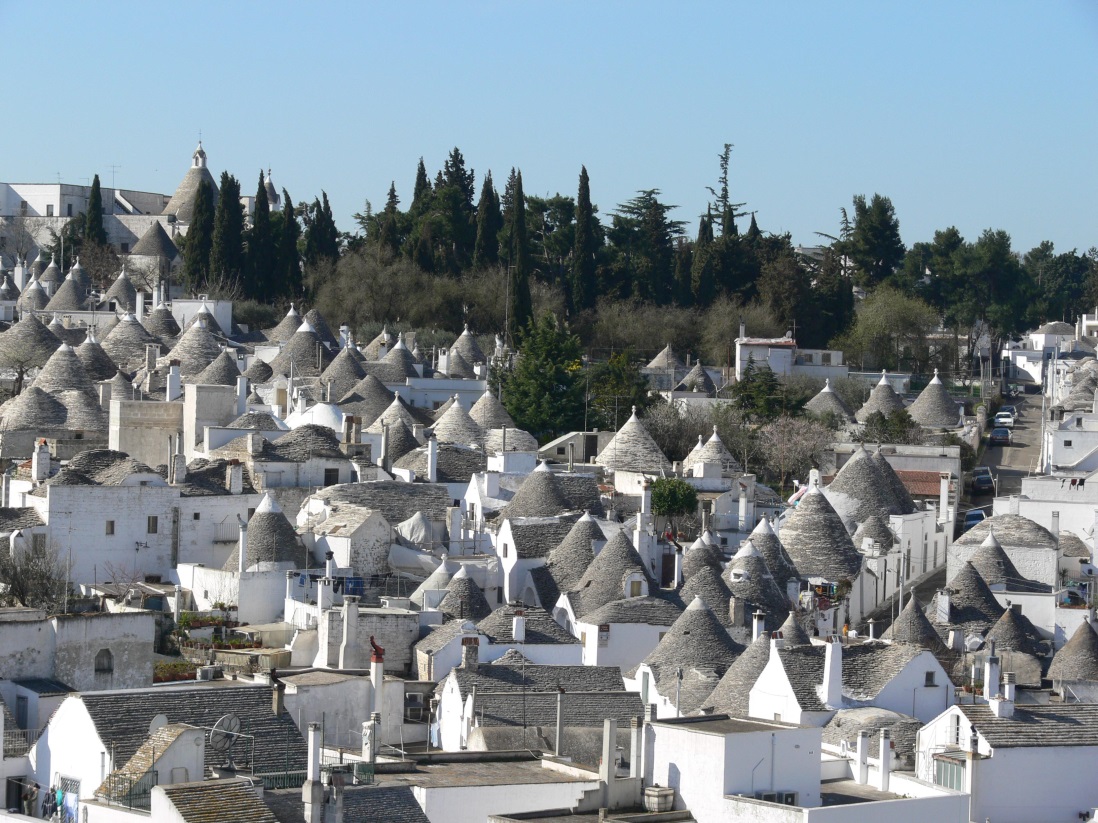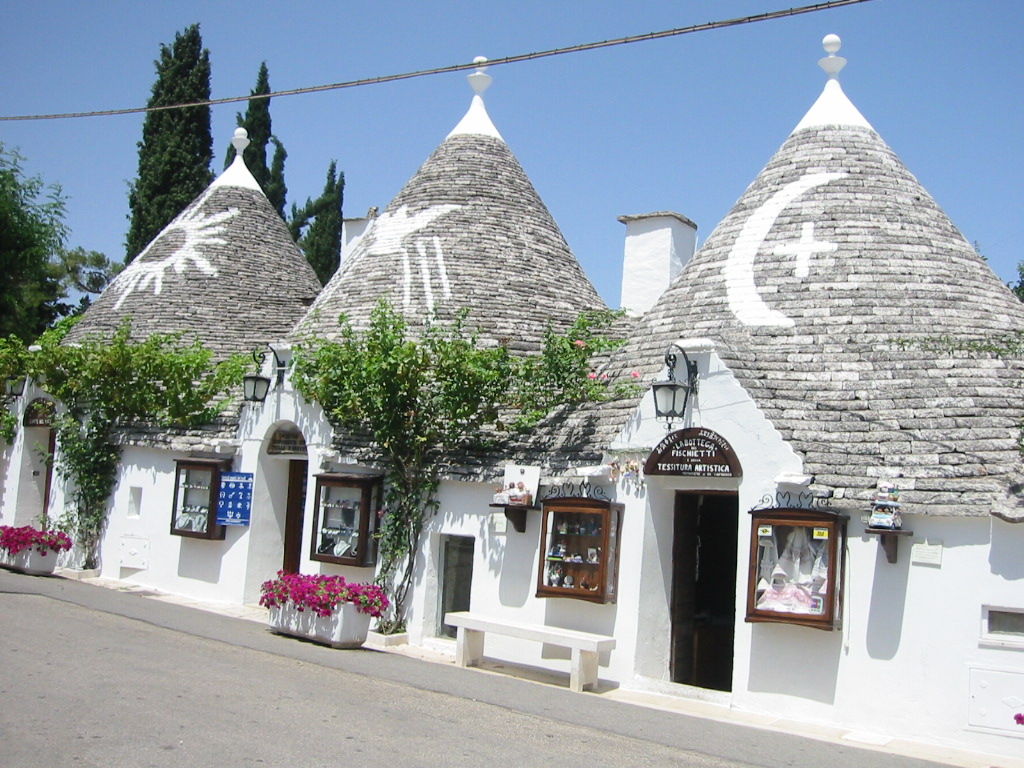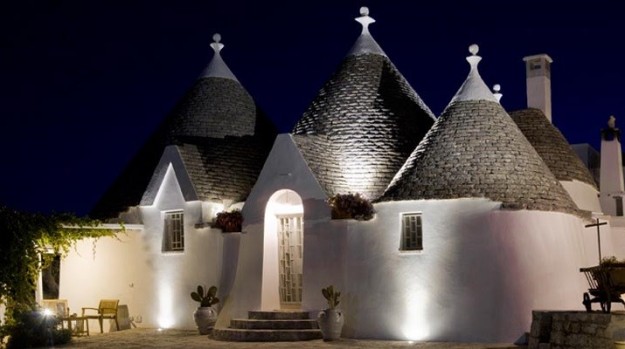
Alberobello (Italian: literally “beautiful tree”) is a small town and comune of the Metropolitan City of Bari, Apulia, southern Italy. It has about 11,000 inhabitants and is famous for its unique trulli buildings. The Trulli of Alberobello have been designated as a UNESCO World Heritage site since 1996. Alberobello was first mentioned in the early sixteenth century when the first 40 families got land to farm in the area. The abundance of calcareous sedimentary material in the area lead to the building of houses with dry stone without the use of mortar. These houses were the first trulli which contributed to the expansion of the settlement. Building the houses of dry stone was a requirement of Count Giangirolamo II as this way it was avoidable to pay taxes on them. Alberobello was feud of the Acquaviva of Aragon until May 27, 1797, when King Ferdinand IV of Bourbon received Alberobello and issued a decree that elevated the small village to a royal city, freeing them from feudal serfdom. A trullo (plural, trulli) is a traditional Apulian dry stone hut with a conical roof. Their style of construction is specific to theItria Valley, in the Murge area of the Italian region of Apulia. Trulli were generally constructed as temporary field shelters and storehouses or as permanent dwellings by small proprietors or agricultural labourers. In the town of Alberobello, in the province of Bari, whole districts are packed with trulli. The golden age of trulli was the 19th century, especially its final decades marked by the development of wine growing.
Today the surviving trulli are popular among English and German tourists and are often bought and restored for general use. However, anyone wishing to restore a trullo needs to conform with many regulations as trulli are protected under the United Nations Educational, Scientific and Cultural Organization (UNESCO) world heritage law. Since the beginning of the century, a large number of trullo houses have been restored and converted into second homes or self-catering cottages. In 1999, rebuilding a trullo roof would cost about three million lire (about 1,500 euros); in 2009 the cost rose up to 15,000 euros.
In late twentieth century, the Monti district in Alberobello was largely a derelict area when a local craftsman, Guido Antionetta, came up with the idea of buying up a few dozen abandoned trulli, installed in them modern kitchenettes, a few pieces of wooden furniture and cast-iron bedframes with a view to renting them out as mini apartments for the night for less than rooms cost at local hotels. He even painted good-luck symbols on the roof of each trullo.
In the Alberobello region, local residents who still live in trulli only do so because they cannot afford to move out or because they provide bed and board for tourists in their trulli.



